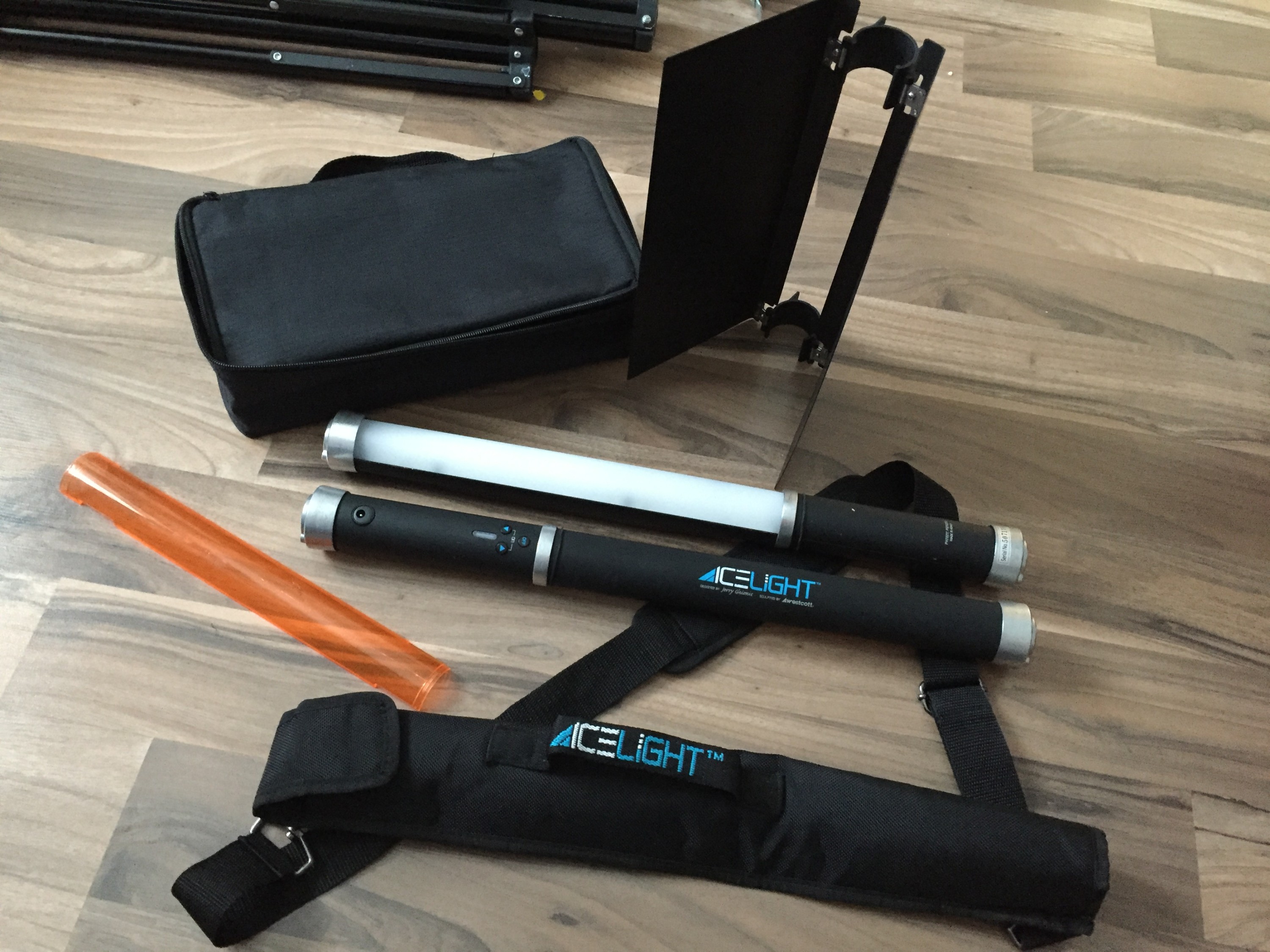We Fuji photographers are blessed with a working tool that can cope with almost any type and amount of light. The low-light capabilities of our cameras throughout the entire product range are excellent thanks to superb lenses and sensors that deliver a very good signal2noise ratio. Many Fuji photographers therefore rely solely on natural light.
This is a guest post by a Swiss photographer Nick Schreger (visit his personal site at www.ishootyou.com and his Facebook page). Thanks so much, Nick! Would you also like to write about your photography and share your images or photography tips and techniques with the FujiLove community? Go ahead and send a brief description of your article idea and a couple of samples of your work to contactfujilove@gmail.com.
Despite it’s many advantages, natural light obviously can’t always be where we need it, and unless one is a true master of lighting techniques, speedlites are rather a compromise than a true substitute to natural light. As mirrorless cameras offer the luxury of showing the image in the EVF before it has been taken, this advantage also isn’t helpful when using speedlites. When working with speedlites (or flash in general), one always has to take test-shots in order to check exposure and shadows. Artificial light however comes in countless color temperatures, and as soon as we have more than one artificial light source in a room, setting a proper white balance is very hard to do and hardly possible. What we need is constant, artificial daylight – a big window to carry around. The Westcott Ice Light is just that.
I came across these lights the first time about two years ago by accident. I watched a video on YouTube featuring Australian photographer Jerry Ghionis, who is big in wedding photography. Instead of speedlites, he used a weird sort of light-saber that created a beautiful, natural looking light with a wonderful fall-off across the model’s face and body. I had already been experienced in flash photography and knew immediately that it would have taken more gear and effort to recreate this sort of light with a speedlite and softboxes. As I watched more and more videos with these lights in action, their ease of use and extraordinary light quality really got a hold on me, and I ordered one. Soon after, I ordered a second one along with snap-on tungsten filters and barn-doors. I have used them for countless photoshoots since then and still consider them one of the best investments of the past years (gear-wise).
What it is
The Ice Light is a portable light for both still photography and video, around 50cm long, the lit portion measures 30cm and the whole thing weights around 500gr. The grip holds a battery that will last a little over an hour at full power which might not be long when shooting outdoors and away from power sockets. I still own the first generation Ice Light that does not remember the last used power setting, so I have to set it again every time I turn it back on. Another downside of this first version is the fact that the battery can not be changed. The Ice Light 2 comes with an exchangeable battery which at 50$ isn’t expensive. The Ice Light 2 also has a small LCD with numbers indicating the current power setting which might be useful to re-create a certain lighting setup, as the power setting is also remembered once the device has been shut off.
Version 1 comes in at 5’200°K and 1’600lm, Version 2 has slightly different values of 5’500°K and 1’740lm. I was able to use the Version 2 Ice Light and I can say that – despite the exchangeable battery – I still prefer the first generation product. The built quality on the first generation Ice Light is better, where the buttons on the Version 2 model appear a bit flimsy and the overall feel is a tiny bit cheaper. The „old“ Ice Light could drive a nail into a wall and there are clips on YouTube where people drop one from 2 meters or more without damaging it – however, the Ice Light 2 is more expensive. I guess it all comes down to the battery, as the light quality is exactly the same on both.
Mounting two Westcott Ice Lights one over the other creates a very soft strip light effect
How I use it
I use my Ice Lights mostly when shooting environmental portraiture and boudoir. People I worked with said that they felt much more comfortable with these lights than with flashes. There are no more time consuming test-shots when working with a mirrorless camera, as you see the image with it’s lights, shadows and colors exactly the way it’s going to be once you take the shot. Working like this feels more like a flow than a shot-by-shot process. Your subjects will quickly get used to these small, non-intimidating constant light sources – a side-effect I benefit from especially when on a boudoir shoot with a shy person. Ice Lights are also my main light source when filming interviews, as they don’t flicker – a clear advantage over cheaper alternative products.
They also work great mounted horizontally. Note that you don’t necessarily need two or more of these. In this example, the Westcott Ice Light on the left serves as a fill.
Although the Ice Lights have threads on each end, I rarely mount them on stands as it is much easier to have an assistant hold them for me. As they are very light, it is absolutely no problem to hold one in one and the camera in the other hand – great for close portraits at a wedding documentary and at party photography. The Ice Lights are extremely rugged, but not weather resistant. When shooting in rain, wrapping the entire Ice Light in cling film works great.
Portable Window Light
Jerry Ghionis advertises his product as a „portable window light“, and I couldn’t describe it better. I often use the Ice Lights to enhance existing window light on a dull or dark day by positioning one or two Ice Lights outside in front of a window (bonus tip: if window light is too harsh, have someone hold up a white blanket outside in front of the window). Attach the optional barn doors, and you can control light spill on backgrounds or certain parts of the body or face opening up a whole new array of new possibilities. The barn doors clip on and off easily, and they are very effective. Thanks to the inverse square law, light intensity is easily controlled by simply moving the Ice Lights further or closer to the subject.
One from above, one on the ground
When shooting indoors, it is likely that there will be other light sources. As the Ice Lights are daylight-calibrated, working with them in such an environment would create a mixed-lighting situation (tungsten light in the background, daylight on the subject). In order to avoid this, Westcott provide snap-on tungsten filters for their Ice Lights. These can also be used in conjunction with the barn doors, leaving you with nothing more to wish.
Have your model hold the light!
Other kids on the block
The Ice Lights sure are not cheap, and there are other solutions on the market. Some of these are the Impact Qualite, Lowel Tota, and Genaray Spectro LED SP-LR, and especially the latter looks like a good shot if you aren’t willing to toss out $$$ for the „real“ thing. I haven’t tested any of those, but you will find a lot of information on YouTube and the likes. If you plan to use such lights for video, make sure they don’t flicker, and by flicker I don’t mean that obvious and visible flicker but that kind of flicker you would only see on video. When in doubt, take your camera to the store and test the light before buying anything. For black/white photography, even cheap working lights will do. Add some improvised cardboard-barndoors and you’ll be ready to go for next to nothing.
Another option are video lights – LED panels of various sizes can also be used, but due to their form factor ans size, catch lights and light spill might not be what you need. Thanks to it’s design, the Ice Light provides an even lighting across a wide strip rather than a beam coming from a square or rectangular smaller light source. It is even possible to combine two Ice Lights together with a double-screw, providing an almost strip-light like effect. Barn doors on video panels are often next to useless, especially on the cheaper ones as they are way too small and reflective instead of black.
Verdict
If my Westcott Ice Lights ever got los, I would replace them immediately. Their ease of use and overall versatility is simply great. While the quantity of light might not be the most, the quality of light is absolutely superior when compared to speedlites. It would take huge umbrellas or softboxes to get comparable results. Make sure you order the barn doors and tungsten filter as well as these two items are very effective and useful.





























